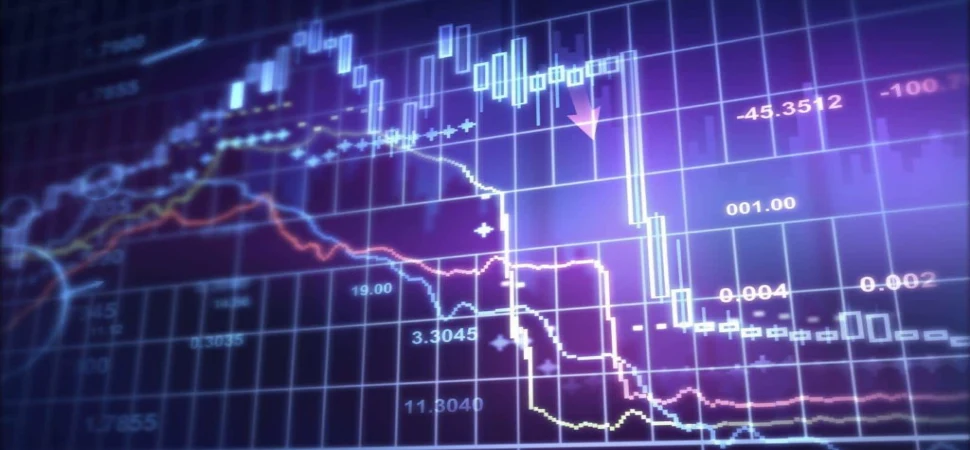13.09.2024
Евгений Лебедев
207

Automated trading is a method of participating in financial markets through a program (either self-developed or purchased) that executes trades based on predefined entry and exit conditions. As a trader, you combine detailed technical analysis with setting parameters for your positions, such as opening orders, trailing stops, and guaranteed stops. The trades are executed automatically from start to finish, allowing you to spend less time monitoring your positions. This approach enhances trading efficiency by executing strategies more quickly. In this article, we explore automated trading and its advantages over traditional methods.
How does automated trading work?
With automated trading, you speculate on price movements in the underlying market using contracts for difference (CFDs). You first select a platform and configure the parameters of your trading strategy. Based on your experience, you define a set of rules and conditions for the algorithm to follow when placing orders. These conditions typically relate to factors such as the timing of the trade, the price at which the position will open or close, and the trade volume. For instance, you might set an instruction to “Buy 100 shares of company X when its 50-day moving average surpasses its 200-day moving average.”
The automated trading strategy continuously monitors market prices and executes trades automatically once your specified conditions are met. The goal is to make trades more efficiently and capitalize on technical opportunities. Keep in mind that CFDs are leveraged financial instruments, meaning that you put up a small margin to control a larger position. Profits and losses are calculated based on the full position size, which can result in losses exceeding your initial margin. Therefore, it is crucial to apply proper risk management strategies when trading CFDs.

Advantages and disadvantages of automated trading
By its very nature, automated trading, thanks to the power of IT tools, allows you to do things that are simply not possible with “human” observation of market movements. A computer program is able to collect and analyze large amounts of information much more efficiently, instantly tracking the smallest fluctuations. In addition, investors are spared the need to fill in and check all fields in the order before its execution. The unpleasant feeling of not being able to take advantage of the best entry point because of the time spent on manual order execution will disappear!
The main advantage of automated trading is the ability to perform a large number of financial operations in a short period of time. Equally important is the fact that when using a trading robot, you completely exclude the emotional factor, which often causes rash decisions. It is important to note that despite the wide automation of processes, it is the user who chooses, sets parameters and even develops and improves the program. Thus, the trader remains at the center of creating his strategy. Nevertheless, under any circumstances, your automated decisions will remain rational in their choices. Cold and unemotional by nature, the “robot” will not cut its positions too early, will not panic, will not be too greedy. It will act mechanically, according to the requirements of its trading program. This is a very important point, because many trading mistakes are caused by investor's emotions (fear, impulsiveness, greed, etc.) With automated trading you can:
- Organize your strategy according to your schedule and make trades automatically day and night
- Reduce the influence of emotional and instinctive reactions with the help of planned strategies
- Identify new opportunities and analyze trends with the help of a wide range of indicators
- Make several trades simultaneously.
Don't forget that you will suffer the consequences of human error if the parameters you set fail to correctly predict future market movements and the extent of those changes. You also run the risk of accumulating losses due to the larger number of simultaneous orders and the speed of execution of automated orders

What platforms can you use for automated trading?
The platform you use for automated trading depends on your trading preferences. We offer several options for automated trading.
ProRealTime
Automate your trading with tools that allow you to create simple or advanced strategies without the need for coding. ProRealTime gives you access to an advanced but convenient backtesting package to test your system. Our platform has over 100 indicators and is optimized to work with both beginners and experienced traders. Get it for free if you trade at least four times a month.
MetaTrader4
Personalize your trading experience by developing your own expert trading algorithms, creating indicators and placing series of orders in MT4. You can also import Expert Advisors (EAs) to help you find opportunities based on your preset parameters. EAs can alert you to an opportunity or automatically open a position.
APIs Build your own platform and create advanced trading solutions from scratch using our APIs. This platform allows you to create your algorithms from beginning to end. Orders are executed using our market-leading technology, ensuring you get the best execution possible. You can view real-time and historical market prices, analyze market instruments and trader sentiment information, maintain lists and more.
CopyTrader from eToro
Based on the principle of social trading, eToro's CopyTrader and CopyPortfolio systems allow investors, especially beginners, to copy trading strategies and positions of more experienced traders from a huge community of users. The CopyTrader system is very easy to use: select the trader you want to copy and the amount you want to invest, and the algorithm will automatically copy all of the investor's positions in real time. The CopyPortfolio system allows you to use automated trading robots based on groups of financial assets or high-performing traders.
Conclusion
Automated Forex trading offers traders the opportunity to effectively manage their trades with minimal involvement thanks to pre-set algorithms. The main advantages of this approach are the speed of operations and the elimination of the emotional factor, which often leads to erroneous decisions. However, automation requires careful tuning of parameters, as errors in forecasts can lead to losses. Despite the high degree of automation, traders remain key participants in the process, responsible for creating and optimizing strategies. The choice of platforms for automated trading depends on the trader's level of experience and needs, allowing everyone to find the most suitable tool.
